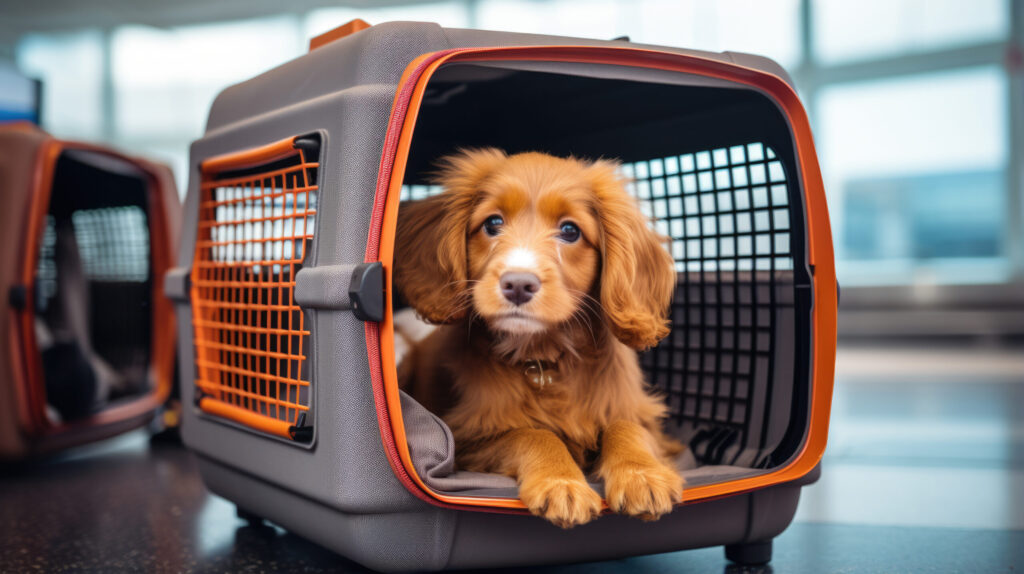Crate training is a valuable tool for dog owners, but when your dog is particularly energetic or prone to destructive behavior, choosing the right crate becomes more than a convenience—it becomes a necessity. While many standard crates are designed for calm or crate-trained pets, they may not hold up to dogs who chew, dig, or panic when left alone. That’s where specialized crates for high-energy dogs and crates for destructive dogs come into play.
If you’ve ever come home to find a bent wire crate, a shredded cushion, or a dog who somehow managed to escape their “secure” enclosure, you’re not alone. High-energy and destructive dogs require crates that offer durability, safety, and mental comfort—all while standing up to serious wear and tear.
In this article, we’ll explore what makes a dog crate suitable for energetic or destructive dogs, which features to prioritize, and how to ensure crate time becomes a positive part of your dog’s daily routine.
Why Standard Dog Crates Aren’t Enough for Every Dog
For many dogs, a basic crate works just fine. But dogs with high energy levels, separation anxiety, or destructive habits often find ways to break out, chew through, or injure themselves in standard wire or plastic crates.
These dogs often:
- Bite or chew the crate’s bars or plastic parts
- Scratch or dig at the floor or door until it weakens
- Slam into the sides trying to escape
- Bend wire panels or squeeze through small openings
- Destroy bedding or other soft materials inside the crate
For these dogs, you need a heavy-duty solution—specifically built to handle this type of behavior safely.
What to Look for in Crates for High-Energy and Destructive Dogs
When searching for the right crate, it’s important to consider specific features that cater to more intense use:
1. Reinforced Construction
Look for crates made from strong materials like reinforced steel or aluminum. These materials are much more durable than standard wire or plastic. They resist bending, warping, and chewing—making them ideal for destructive behavior.
2. Secure Latching Mechanisms
Many dogs figure out how to unlatch or manipulate basic crate locks. A strong crate should have secure, escape-proof latches that are difficult for dogs to open with their paws or mouth. Double locks or sliding bolt systems add an extra layer of security.
3. Proper Ventilation Without Weak Points
Destructive dogs may exploit mesh windows or open slats to rip or bend their way out. Look for a crate that offers excellent ventilation without compromising durability. Strong vent holes or small gaps are preferable to open bars for these dogs.
4. Bite-Resistant Flooring
Some dogs try to chew the bottom of their crate or dig at the corners. Choose a crate with a non-removable or chew-resistant floor that can’t be easily damaged. Metal or composite floors are better than plastic trays for these cases.
5. Comfortable but Simple Interior
Skip soft bedding or easily torn blankets until your dog is fully crate-trained. Instead, use chew-proof mats or pads that provide comfort without encouraging destructive chewing.
6. Size Appropriateness
While your dog should have room to stand, turn, and lie down, a crate that’s too large can create anxiety or invite pacing. For crates for high-energy dogs, a snug fit offers a more den-like environment that promotes calm behavior.
7. Portability and Placement
Some heavy-duty crates come with wheels or carrying handles, making them easier to relocate if needed. Also, place the crate in a quiet, low-traffic area to minimize stimulation that could trigger unwanted behavior.
The Importance of Mental Stimulation and Exercise
Before placing a high-energy or destructive dog in a crate, make sure they’ve had enough physical and mental stimulation. Dogs need an outlet for their energy. Crate time is not a substitute for walks, training, or play.
Try to incorporate the following into your routine:
- Long walks or structured exercise sessions
- Puzzle feeders or treat-dispensing toys
- Training games that tire out both body and brain
- Time spent with you or in a dog-safe environment
A tired dog is much less likely to attempt escaping or destroying their crate.
Gradual Crate Introduction Is Still Key
Even the best crate for destructive dogs won’t help if your dog associates it with punishment or isolation. Gradually introduce the crate using positive reinforcement, treats, and short sessions. Leave the door open at first and let your dog explore at their own pace.
Crate training takes time, especially for anxious or stubborn dogs. Be patient, and avoid using the crate as a disciplinary tool. Your goal is to make it a place your dog wants to enter—not one they want to escape from.
What Professionals Use
Professional trainers, working dog handlers, and competitive dog owners often rely on specially designed crates to house high-drive dogs safely. One notable option is Impact Dog Crates, known for their ultra-durable, escape-proof aluminum crates. These crates are engineered to withstand intense pressure and chewing, making them a popular choice for people dealing with the challenges of high-energy or destructive dogs.


